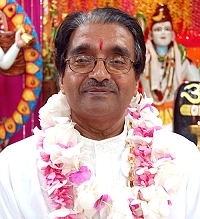From a satsang with Paramacharya of SWAHA, H.H. Pundit Hardeo Persad
In the auspicious month of May, devotees of Sanaatan Dharma observe the anniversaries of the many divine manifestations. Devotees honour the Avataar Jayantis of Parashuram, Narsingha, Kurma and Buddha, each embodying profound aspects of the Divine.
Sanaatan Dharma delineates the Unmanifest Supreme Being as Nirguna Brahm, the Eternal One without attributes, existing beyond all qualification. Yet, the Absolute, in its boundless grace, assumes a name and form, entering the realm of Saguna Brahm, adorned with qualities and attributes, to guide and uplift humanity.
Avataar, the deliberate descent of the Divine into the world, epitomises the transition from the unconditioned to the conditioned form of Brahman. Across the ages, various avataars have graced the earth, each with a unique purpose, yet all aiming to awaken humanity to the truth of oneness with the Divine.
Human consciousness, tethered to the tangible, finds solace and inspiration in the manifest form of the Divine. Through avataars, individuals can cultivate a direct relationship with the Divine, fostering spiritual evolution and guiding them towards liberation.
Characterised by divine qualities, avataars exemplify supremacy, righteousness, prosperity and spiritual enlightenment. Their manifestation serves to protect the virtuous, eradicate evil and uphold Dharma, echoing the eternal cycle of creation, sustenance and dissolution.
Avataars manifest in diverse forms, each representing a facet of the Supreme Being’s cosmic play. From Guna Avataars, embodying the qualities of creation, sustenance and destruction, to Vyuha Avataars, instrumental in cosmic governance, each manifestation serves a unique cosmic purpose.
Among the pantheon of avataars, Bhagavan Vishnu’s major manifestations hold a significant place. From Matsya to Kalki, each avataar symbolises a stage in humanity’s spiritual evolution, guiding seekers towards liberation from the illusions of duality.
More than mere chronological events, the dasha avataars offer profound metaphysical insights, symbolising the soul’s journey towards self-realisation. From the initial inquiry to the ultimate enlightenment, each avataar represents a milestone in the seeker’s quest for unity with the Divine.
In conclusion, avataars embody the dynamism of divine grace, guiding humanity towards spiritual evolution and liberation. As devotees commemorate these sacred manifestations, they are reminded of the eternal truth that birth is but a step towards ultimate freedom, towards realising the divinity inherent within every soul.



